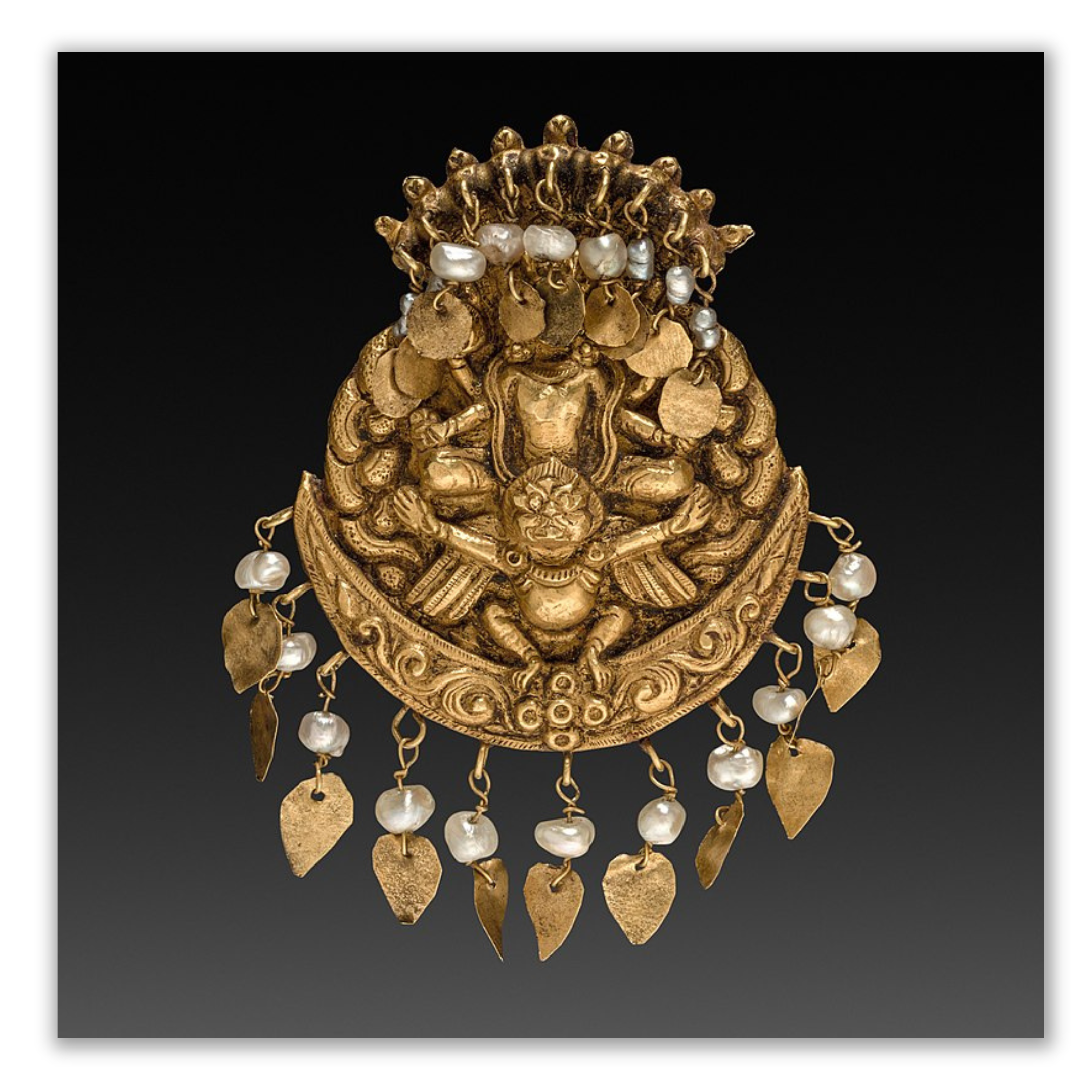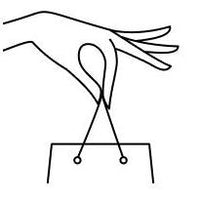What is Fine Art Jewelry/ Introduction and Guide:

Emerald Mother Of Pearl Diamond Gold Taj Earrings by 1stDibs
Fine art jewelry represents a harmonious blend of artistic expression, exquisite craftsmanship, and the timeless beauty of precious materials. Unlike conventional jewelry, which primarily focuses on the intrinsic value of gemstones and metals, fine art jewelry places a profound emphasis on the aesthetic, conceptual, and emotional aspects of the piece. In this comprehensive guide, we will delve into the captivating world of fine art jewelry, exploring its history, characteristics, notable artists, and the intricate process of creation.
Understanding Fine Art Jewelry
Fine art jewelry transcends the realm of traditional adornment. It is a marriage of artistic expression, exceptional craftsmanship, and the allure of precious materials. Unlike conventional jewelry, which often prioritizes the intrinsic value of gemstones and metals, fine art jewelry places a profound emphasis on the conceptual, emotional, and aesthetic dimensions of the piece. In this comprehensive guide, we will delve into the captivating world of fine art jewelry, exploring its essence, characteristics, notable artists, and the intricate process of creation.
Defining Fine Art Jewelry:
Fine art jewelry exists at the intersection of artistic vision and technical skill. It involves the creation of wearable art pieces that are not only aesthetically stunning but also conceptually profound. Artists who engage in fine art jewelry are not only accomplished jewelers but also accomplished artists, seamlessly blending their mastery of traditional jewelry-making techniques with a deep understanding of design principles and aesthetics.
A Departure from Conventional Adornment
While conventional jewelry often places emphasis on the monetary value of materials, fine art jewelry prioritizes the artistic vision and conceptual depth of the piece. Each creation is unique, carrying with it a story, a sentiment, or a profound idea. It challenges the boundaries of what jewelry can be, pushing the envelope of creativity and innovation.

Characteristics of Fine Art Jewelry:

Laguna Beach Jewelry Designer by Adam Neeley
Innovative Design
Fine art jewelry is known for its innovative and often unconventional designs. Artists in this realm are not bound by tradition; they experiment with materials, techniques, and forms to create pieces that are both visually striking and intellectually stimulating.
Conceptual Depth
Each piece of fine art jewelry is anchored in a narrative, concept, or theme. This conceptual foundation adds a layer of meaning and engagement beyond the aesthetic appeal. It invites the viewer to delve deeper into the story behind the piece.
Limited Edition or One-of-a-Kind
Fine art jewelry is typically produced in limited quantities or as one-of-a-kind creations. This exclusivity enhances the value and significance of each piece.

A Glimpse into History:
Origins of Fine Art Jewelry
Fine art jewelry has ancient roots, with civilizations like the Egyptians, Greeks, and Romans adorning themselves with intricate jewelry often imbued with symbolic or religious significance. However, the modern concept of fine art jewelry emerged during the 20th century with the advent of artistic movements like Art Nouveau and Art Deco.
Art Movements and Fine Art Jewelry
-
Art Nouveau (Late 19th to Early 20th Century): Celebrated for its organic, flowing forms inspired by nature, Art Nouveau greatly influenced jewelry design, giving rise to pieces that echoed the beauty of the natural world.
-
Art Deco (1920s to 1930s): Characterized by geometric shapes, bold colors, and a sense of opulence, Art Deco jewelry reflected the glamour and sophistication of the Roaring Twenties.

Notable Artists and Movements:
René Lalique

René-Lalique verre et citrine Chantecler
A pioneer of Art Nouveau jewelry, Lalique's creations featured intricate designs inspired by nature, often incorporating materials like glass and enamel.
Alexander Calder

brass wire bracelet by Alexander Calder (1898-1976)
Renowned for his mobile sculptures, Calder also ventured into creating wearable art pieces, blurring the lines between sculpture and jewelry.
Art Smith

A leading figure in the American Studio Jewelry Movement, Smith's avant-garde designs challenged conventional notions of jewelry.
Studio Jewelry Movement
Emerging in the mid-20th century, this movement emphasized the individual artist as both creator and craftsman, fostering a more personal and artistic approach to jewelry-making.

Creating Fine Art Jewelry: The Process

Natural Green Colombian Emerald Diamond Cascade Drop Earrings by 1stDibs
Fine art jewelry is an exquisite form of wearable art that demands a fusion of artistic vision, technical skill, and a profound understanding of materials. Each piece is a testament to the artist's creativity, showcasing their ability to transcend the boundaries of conventional jewelry-making. In this guide, we will take you through the intricate process of creating fine art jewelry, from conceptualization to the finishing touches.
1. Conceptualization
Inspiration and Idea Generation
The journey of creating fine art jewelry begins with inspiration. This can be drawn from a myriad of sources - nature, personal experiences, emotions, societal issues, or abstract concepts. Artists often keep sketchbooks or journals to capture fleeting moments of inspiration.
Theme and Narrative
Once inspired, the artist develops a theme or narrative for the piece. This could be a story, a message, an emotion, or an exploration of a specific concept. The chosen theme will guide all subsequent decisions in the creation process.
2. Material Selection
Exploring Unconventional Materials
Fine art jewelry often incorporates a wide range of materials beyond the traditional metals and gemstones. This can include wood, glass, ceramics, plastics, textiles, and even found objects. The choice of materials is integral to the piece's conceptual and aesthetic impact.
Consideration of Material Properties
Artists must understand the properties of the chosen materials - their durability, malleability, color, texture, and how they interact with other elements in the piece. This knowledge ensures that the materials serve the artistic vision effectively.
3. Techniques and Execution
Traditional and Experimental Techniques
Fine art jewelers are adept in both traditional jewelry-making techniques (e.g., soldering, stone-setting, metal forming) and experimental methods (e.g., enameling, filigree, mixed-media assemblage). The choice of technique depends on the desired outcome and the compatibility with selected materials.
Attention to Detail
Fine art jewelry demands precision and attention to detail. Each component of the piece must be meticulously crafted to align with the artist's vision. This includes considerations for symmetry, proportions, and surface finishes.
4. Concept Integration
Throughout the creation process, the artist continually references the initial concept and narrative. Every design decision - from the arrangement of elements to the choice of colors and textures - should serve to convey or enhance the intended message or emotion.
5. Finishing and Presentation

Ruby, Black & White Diamond Earrings by Adam Neeley
Surface Treatments
The finishing touches are crucial in fine art jewelry. Surface treatments such as polishing, patination, or texturing can dramatically impact the visual and tactile qualities of the piece.
Presentation and Display
How a piece is presented significantly influences how it is perceived. Artists carefully consider how the jewelry will be worn or displayed, ensuring it complements the wearer or the environment in which it is showcased.
6. Reflection and Refinement
Critical Evaluation
Once the piece is complete, the artist engages in a critical evaluation. They assess how effectively the piece communicates the intended concept and if any adjustments are necessary.
Iterative Process
Fine art jewelry often involves a series of iterations. Artists may revisit and refine their designs, applying new techniques or exploring different materials to further develop their artistic voice.
7. Documentation and Communication
Many artists document their creative process through sketches, photographs, or written reflections. This documentation serves as a record of the evolution of the piece and can be valuable for future reference or for sharing the artistic journey with others.
Creating fine art jewelry is a deeply personal and expressive endeavor. It requires a profound connection to the chosen materials, a mastery of techniques, and a commitment to the conceptual foundation of the piece. The result is not just an accessory, but a tangible embodiment of the artist's creativity and vision, inviting the viewer to engage with the world in new and profound ways.

Collecting and Appreciating Fine Art Jewelry
Building a Collection
Collecting fine art jewelry requires a discerning eye, a deep appreciation for artistic expression, and a willingness to explore emerging artists and movements.
Exhibitions and Galleries
Art galleries and exhibitions often showcase the work of fine art jewelers. Attending these events provides an opportunity to engage with the artists, gain insights into their creative processes, and discover new pieces.
Valuation and Investment
While fine art jewelry can appreciate in value, it's important to approach it as a form of artistic expression rather than a purely financial investment. Researching the artist's background, exhibition history, and critical reception can provide context for assessing the piece's value.

Conclusion
Fine art jewelry stands as a testament to the boundless creativity and artistic vision of its creators. It challenges conventions, blurs the boundaries between art and adornment, and invites us to engage with the world in new and profound ways. Whether you're an avid collector, an aspiring artist, or simply an admirer of beauty, fine art jewelry offers a captivating journey into the realm of wearable art.











